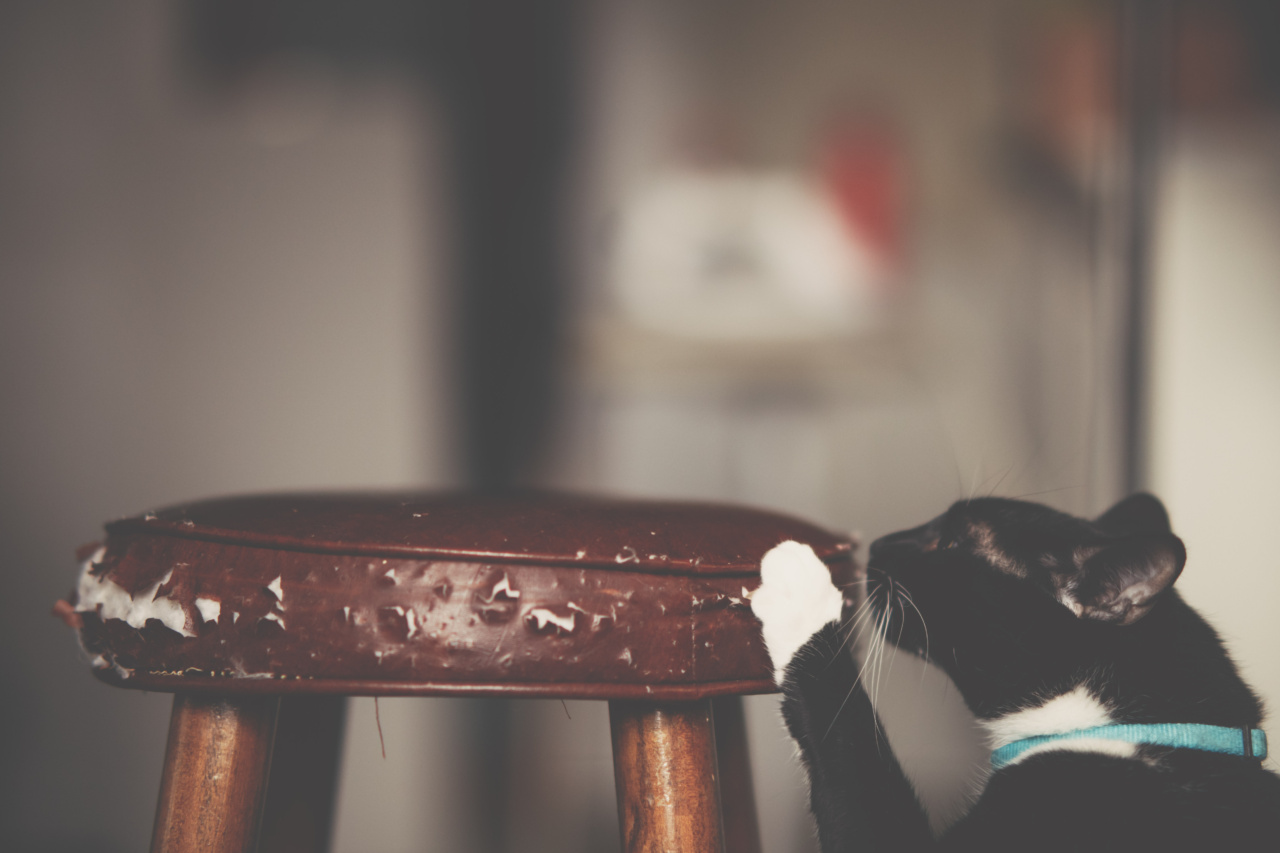Cats are notorious for their love of scratching and shredding, but when it comes to your furniture, their behavior can be quite frustrating. From claw marks on your couch to shredded upholstery, these tiny predators can wreak havoc on your home.
Understanding why cats engage in this destructive behavior and finding effective ways to redirect their instincts is key to keeping your furniture intact. In this article, we will explore the reasons behind your cat’s scratching and shredding habits and provide practical tips on how to stop them from damaging your furniture.
The Nature of Cat Scratching
Before delving into solutions, it is important to understand that scratching is a natural behavior for cats. It serves multiple purposes, including:.
1. Territory Marking
Cats have scent glands in their paws, and scratching helps them mark their territory by leaving both visual and olfactory cues. This helps establish ownership and communicate their presence to other cats.
2. Nail Maintenance
Scratching also helps cats shed their old, worn-out claw sheaths and expose sharper claws beneath. It is a way for them to keep their nails healthy and functional.
3. Stretching and Exercise
Stretching is an essential part of a cat’s daily routine. When they dig their claws into a surface and stretch their bodies, it helps them maintain flexibility and exercise their muscles.
Why Cat Scratching Can Damage Furniture
While scratching is perfectly natural for cats, when they choose your furniture as their scratching post, it can lead to significant damage. Here are a few reasons why this occurs:.
1. Material Attraction
Cats are drawn to certain materials that provide the ideal texture for scratching. Fabrics like upholstery, carpet, and curtains mimic the sensation of scratching a tree trunk or a rough surface in the wild.
2. Visual Stimulation
Your cat may engage in scratching behavior to leave visible marks as a way of displaying dominance or signaling their presence.
3. Stress and Anxiety
Just like humans, cats can experience stress and anxiety. Scratching can be a form of self-soothing for them, helping to relieve tension or frustration.
Effective Ways to Prevent Furniture Damage
1. Provide Suitable Alternatives
In order to redirect your cat’s scratching instinct away from your furniture, it is essential to provide appealing alternatives. Invest in sturdy scratching posts or boards made of materials such as sisal rope or cardboard.
These materials tend to mimic the texture that cats are naturally attracted to. Place these scratching posts strategically around your home in areas where your cat spends most of their time.
2. Make Furniture Less Attractive
To discourage your cat from scratching your furniture, you can make it less appealing to them. Use double-sided tape or aluminum foil on the areas your cat targets the most. Cats dislike the feeling of sticky surfaces or the sound and texture of foil.
You can also try placing citrus-scented sprays or cotton balls soaked in essential oils, such as lavender or citrus, near the furniture. Most cats find these scents unpleasant and will avoid scratching in those areas.
3. Trim Your Cat’s Nails
Regular nail trims can help minimize the damage caused by scratching. By keeping your cat’s nails short and rounded, their scratching won’t result in deep gouges or tears.
If you are not comfortable trimming your cat’s nails at home, consult a professional groomer or veterinarian who can assist you.
4. Use Soft Paws or Nail Caps
If your cat’s scratching habits continue to damage your furniture, you can consider using soft paws or nail caps. These are small rubber or plastic covers that can be glued over your cat’s claws.
While they don’t impede normal scratching behavior, they do protect your furniture from sharp claws.
5. Feline Behavioral Therapy
If your cat’s scratching behavior is compulsive or stress-related, it may be beneficial to seek help from a feline behaviorist or veterinarian.
They can assess the underlying causes of the behavior and recommend tailored strategies to address it, such as environmental enrichment or anti-anxiety medication if necessary.
6. Positive Reinforcement and Distraction
When your cat starts scratching an inappropriate surface, redirect their attention to an approved scratching alternative. Use positive reinforcement by praising and offering treats when they use the appropriate scratching post or board.
You can also use toys or interactive play sessions to distract them from scratching furniture and engage their natural hunting instincts.
7. Protect Furniture with Covers
If all else fails, consider using furniture covers or throws to protect your upholstery. This is a temporary solution until you can successfully modify your cat’s scratching behavior.
Ensure the covers are securely attached and provide an appealing alternative nearby, so your cat can still exercise their scratching instincts without damaging the furniture.
Conclusion
While curbing your cat’s scratching and shredding tendencies may require time and patience, it is entirely possible to save your furniture from their sharp claws.
By understanding the reasons behind their behavior and providing appropriate alternatives, you can redirect their instincts and create a harmonious living environment for both you and your feline companion.






























